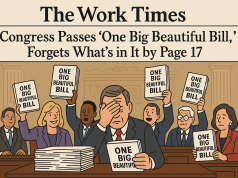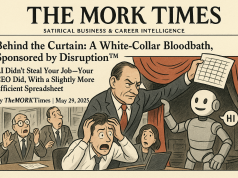In an age where digital communication has become the crux of workplace interactions, the modern workplace is grappling with a silent crisis that often goes unnoticed: the potential for rampant misunderstandings in the absence of face-to-face conversations. The transformation of communication modalities has undoubtedly made information exchange more rapid and streamlined, yet the erosion of non-verbal cues in our daily interactions is a casualty that deserves a closer look.
At The Work Times, we believe in examining the fine thread that holds together the fabric of workplace dynamics. In this exploration, we delve into the chasms created by digital communication, investigating how they impact employee relationships and, by extension, overall productivity.
Text-based communication, while efficient, can be a minefield of misinterpretations. A simple message can be perceived in multiple ways depending on the reader’s current emotional state, past experiences, or cultural background. The absence of tone, facial expressions, and body language – which provide critical context in verbal communication – leaves much to the imagination, and unfortunately, to miscommunication.
The emotional health of workers is at stake when they are constantly engaged in deciphering the meaning behind digital correspondence. The lack of clarity can lead to increased stress and anxiety, as employees may ruminate over the intended message. This cognitive overload not only dampens morale but can also lead to burnout, a phenomenon increasingly prevalent in today’s workforce.
Real-life scenarios highlight the far-reaching consequences of digital misinterpretation. Take, for instance, the project manager who sends out an email marked ‘urgent’ without explicit context, triggering a wave of panic and overtime work, only for the team to learn later that the urgency was a miscommunication. Or consider the remote worker who misconstrues a colleague’s brief instant message as curt or dismissive, leading to strained relationships and reluctance to collaborate.
Expert analyses point to several strategies to counteract these pitfalls. One approach is the conscious use of ’emotional punctuation’ – emoticons, exclamation marks, and other textual cues – to simulate the warmth of in-person exchanges. Other tactics include establishing clear communication protocols, encouraging video calls to reintroduce visual cues, and promoting an organizational culture that values emotional intelligence and empathy.
Moreover, innovative solutions are emerging to enhance effective communication in the workplace. From collaboration platforms designed to simulate a virtual office environment to AI-driven tools that help decode the sentiment behind text, technology is striving to bridge the gap in understanding.
At The Work Times, we encourage a dialogue among our readers. How does your organization tackle the challenges of digital communication? Share the strategies and tools that have transformed your professional experiences, bridged gaps in understanding, and fostered a more cohesive work environment.
The way forward lies not just in acknowledging the silent crisis in workplace communication but in actively engaging with solutions that cater to the nuanced needs of a digitally connected workforce. Let’s work together to turn silent misunderstandings into opportunities for clearer, more empathetic connections.

























